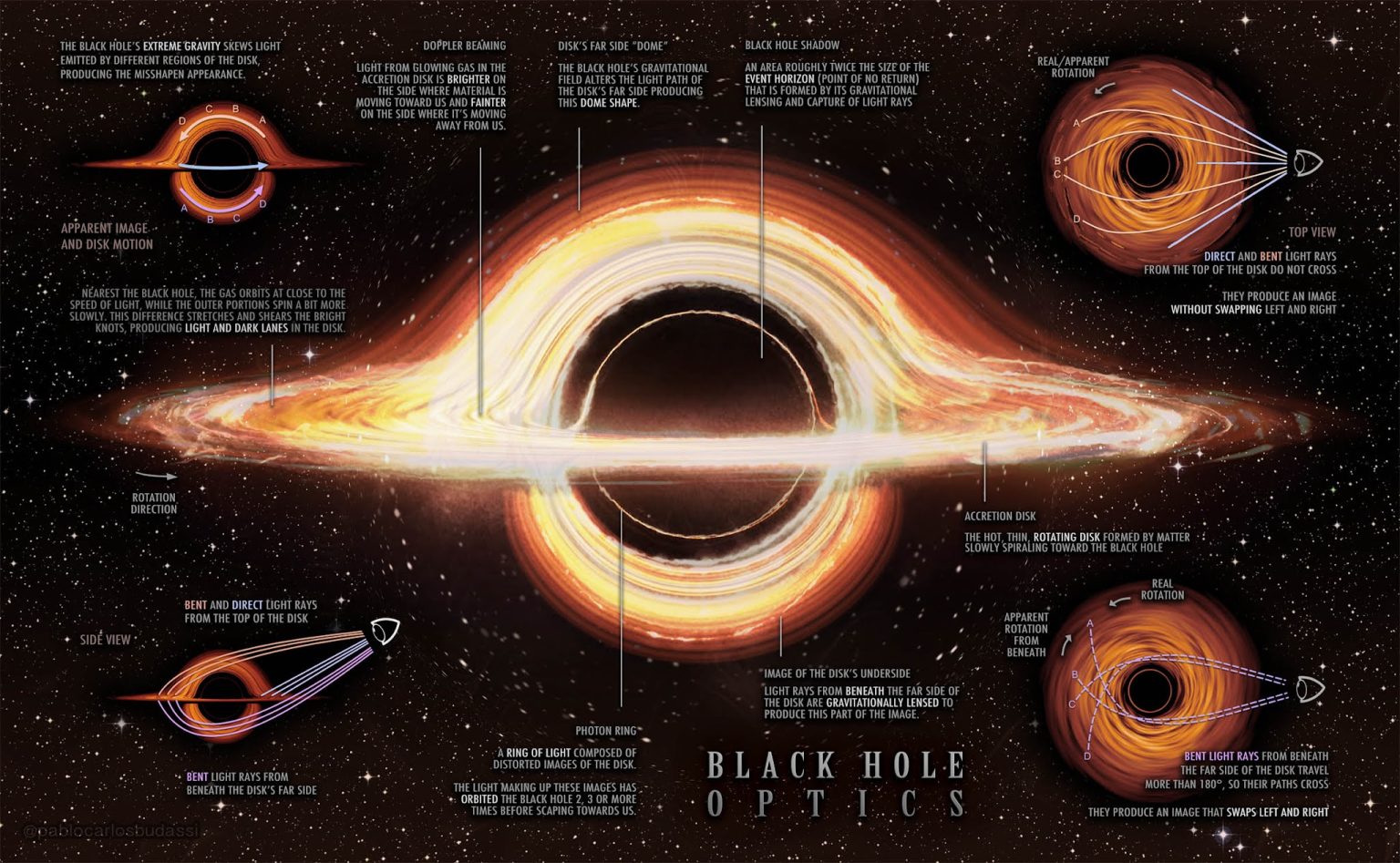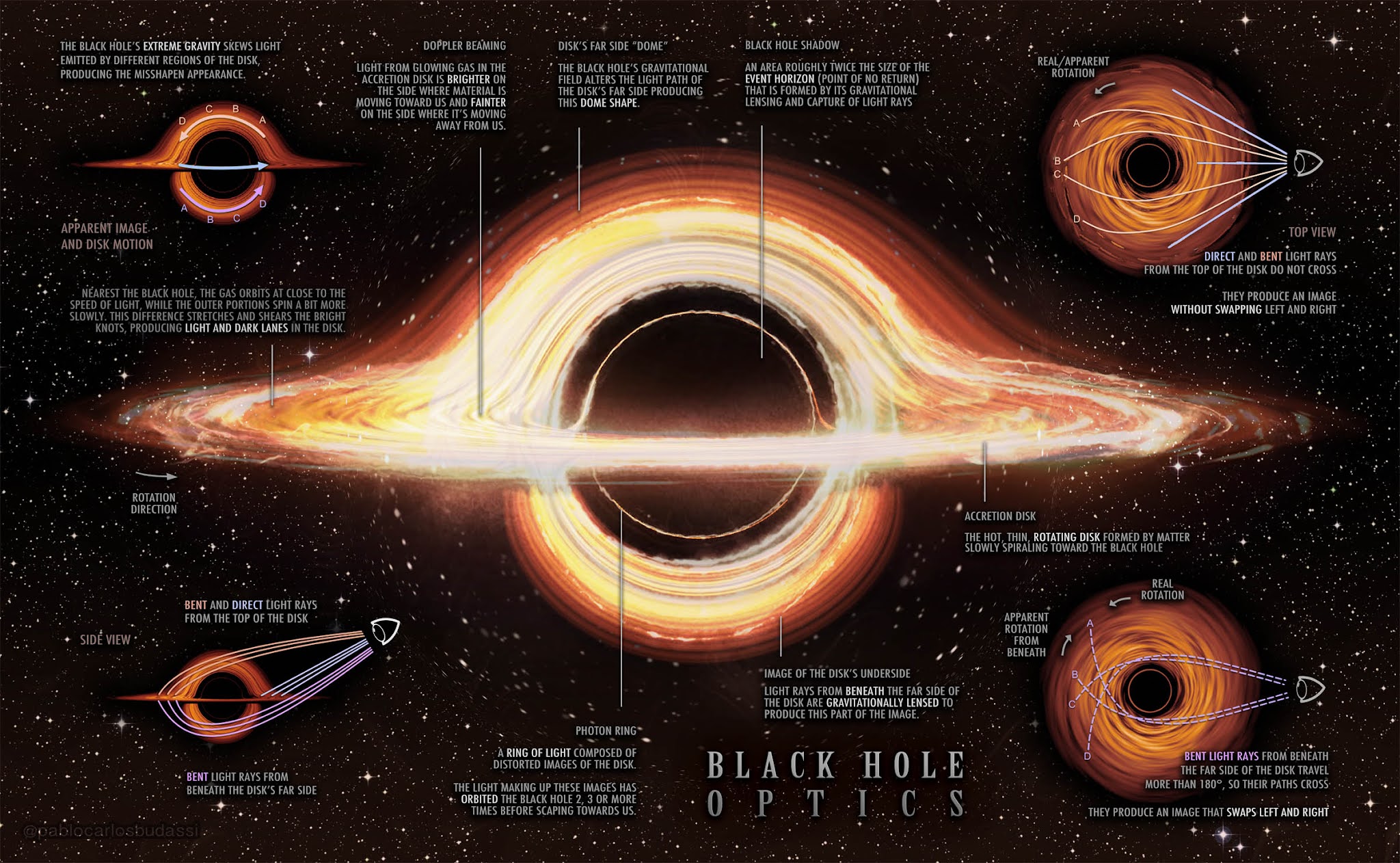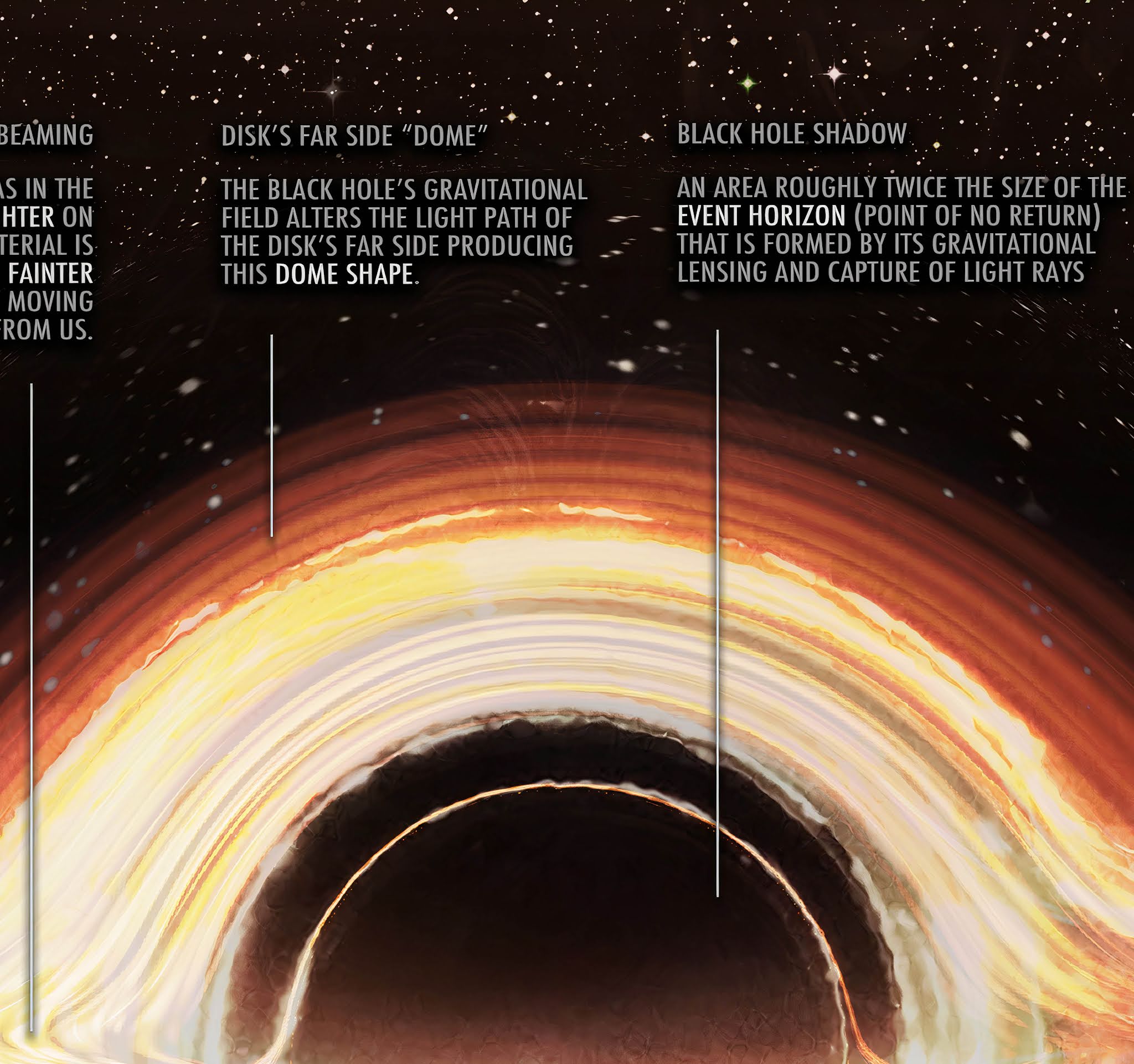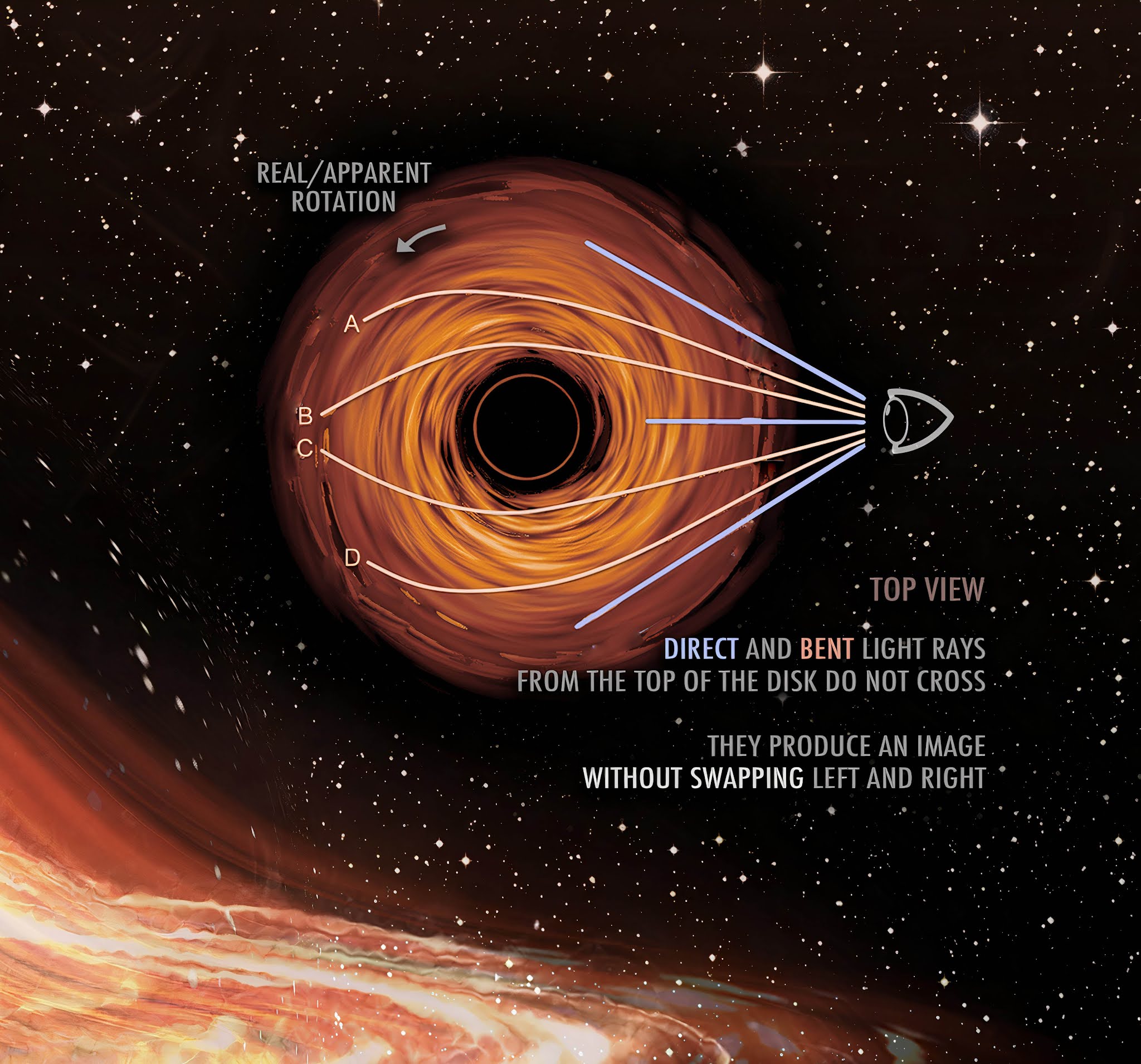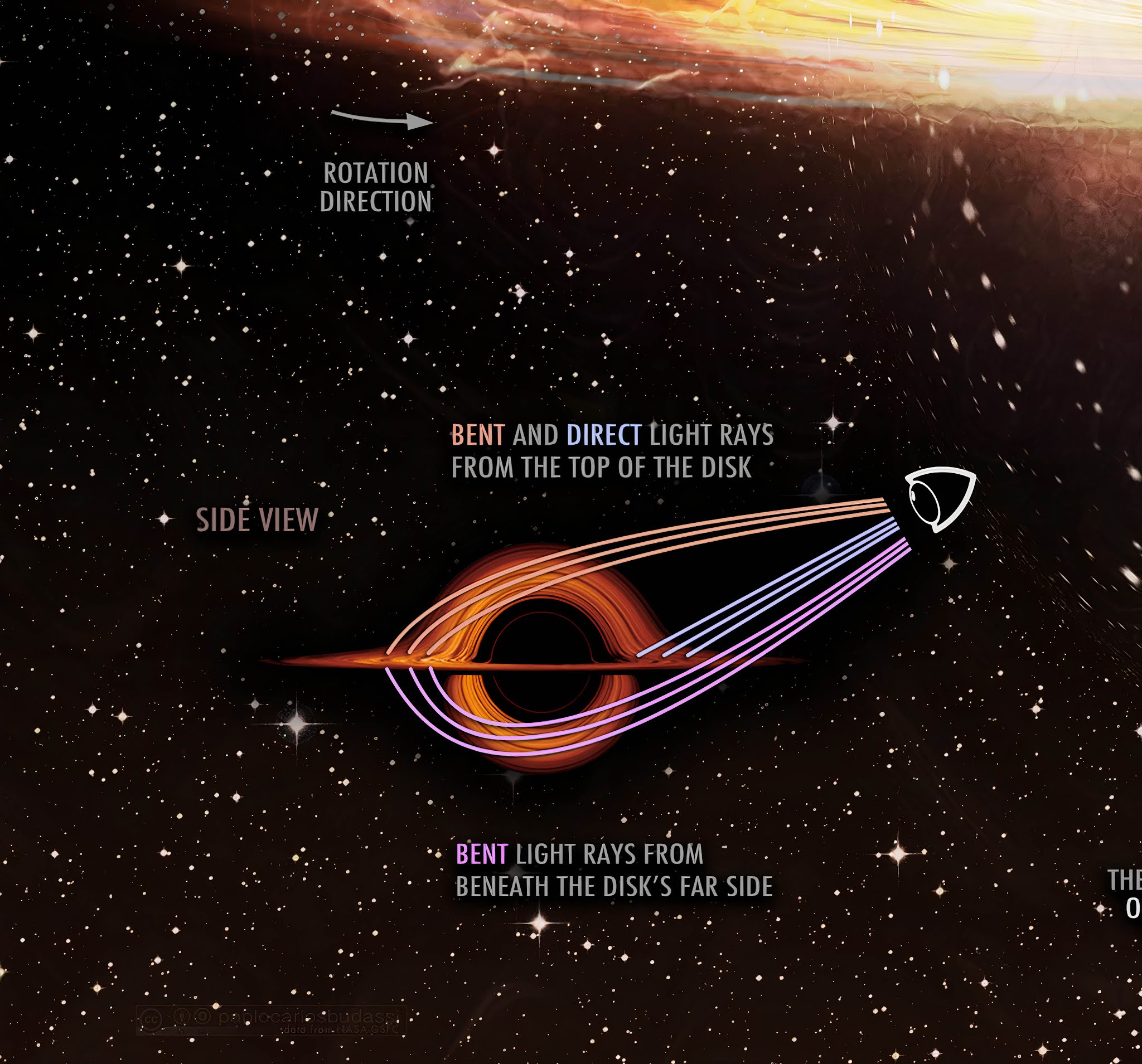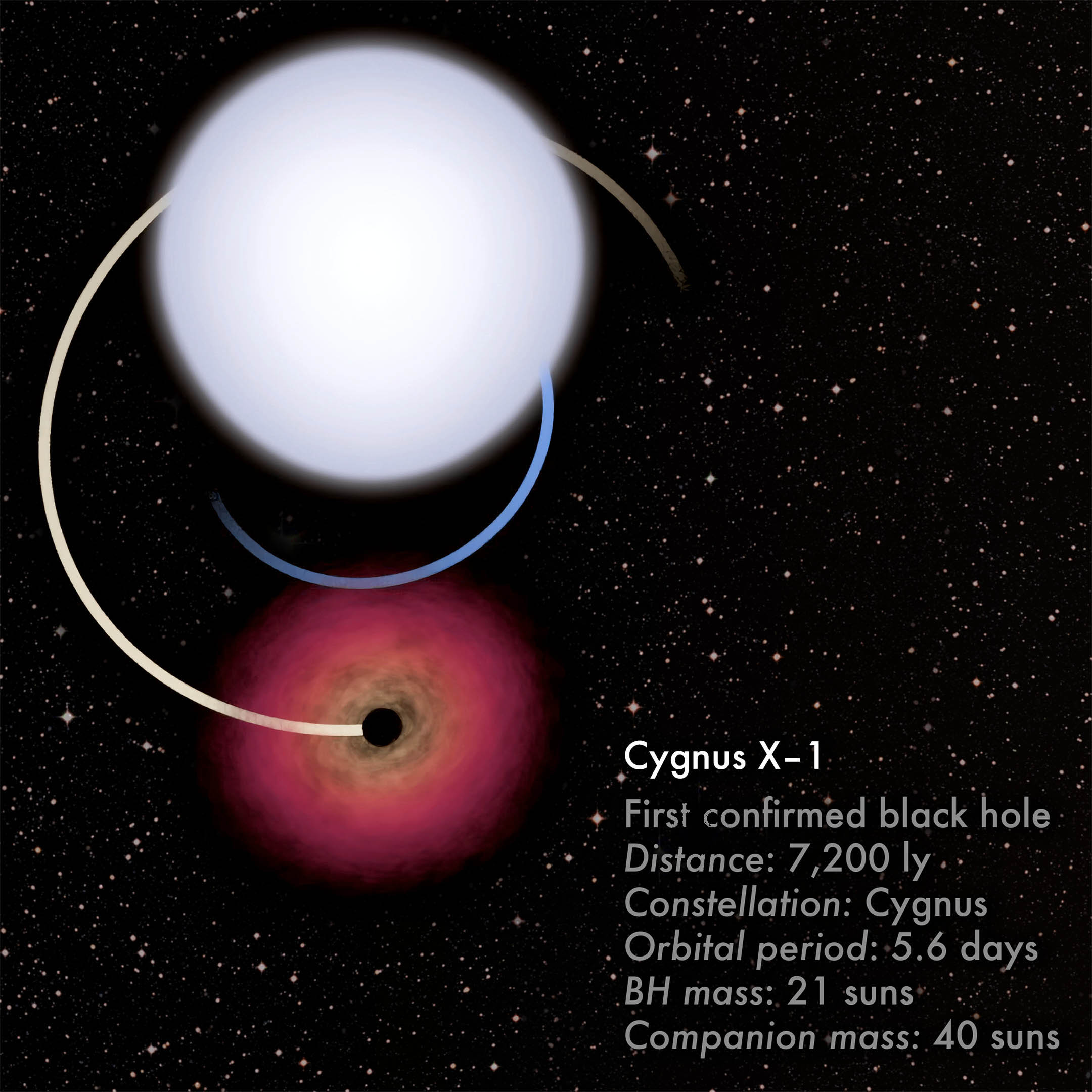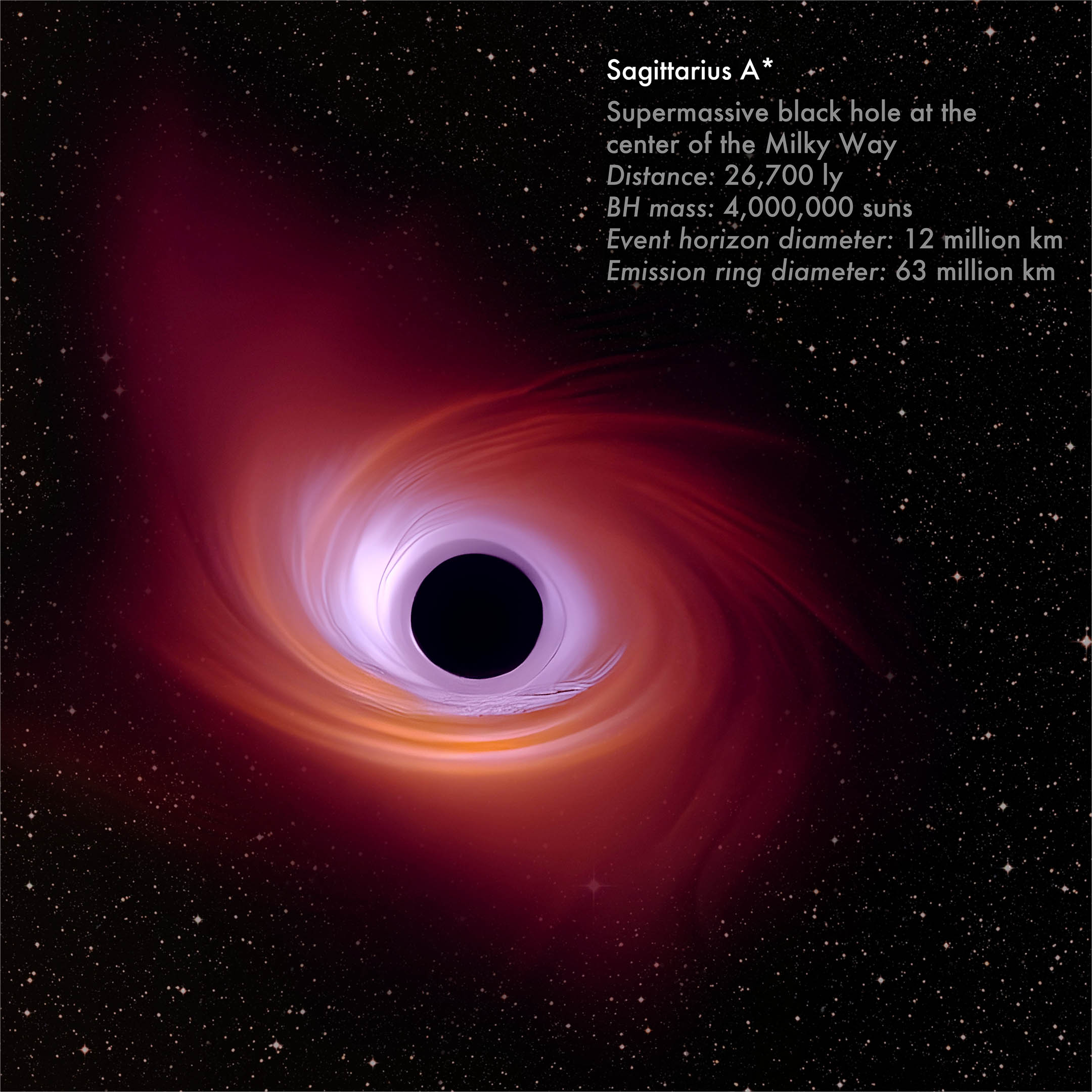Black Holes in the Milky Way
(*system)
An infographic showing a scaled representation of the 23 confirmed black holes within our galactic vicinity. 22 stellar-mass black holes and one central supermassive black hole are presented to scale in a perspective view as seen from Earth. A fact sheet accompanies these adorable creatures so you can learn about their different personalities.
This is a remix/derivative of NASA’s Black Hole Orrery. Black hole images and temperature maps created by: NASA’s Goddard Space Flight Center/Andrew J Christensen. Factsheets and overall poster composition by Pablo C. Budassi in September 2023.
Keywords: black hole, black, hole, BH, universe, physics, science, infographic, Einstein, Hawking, supermassive, milky way, galaxy, space, time, Sagittarius, quantum, NASA, wormhole, entropy, event horizon, star, relativity, gravity
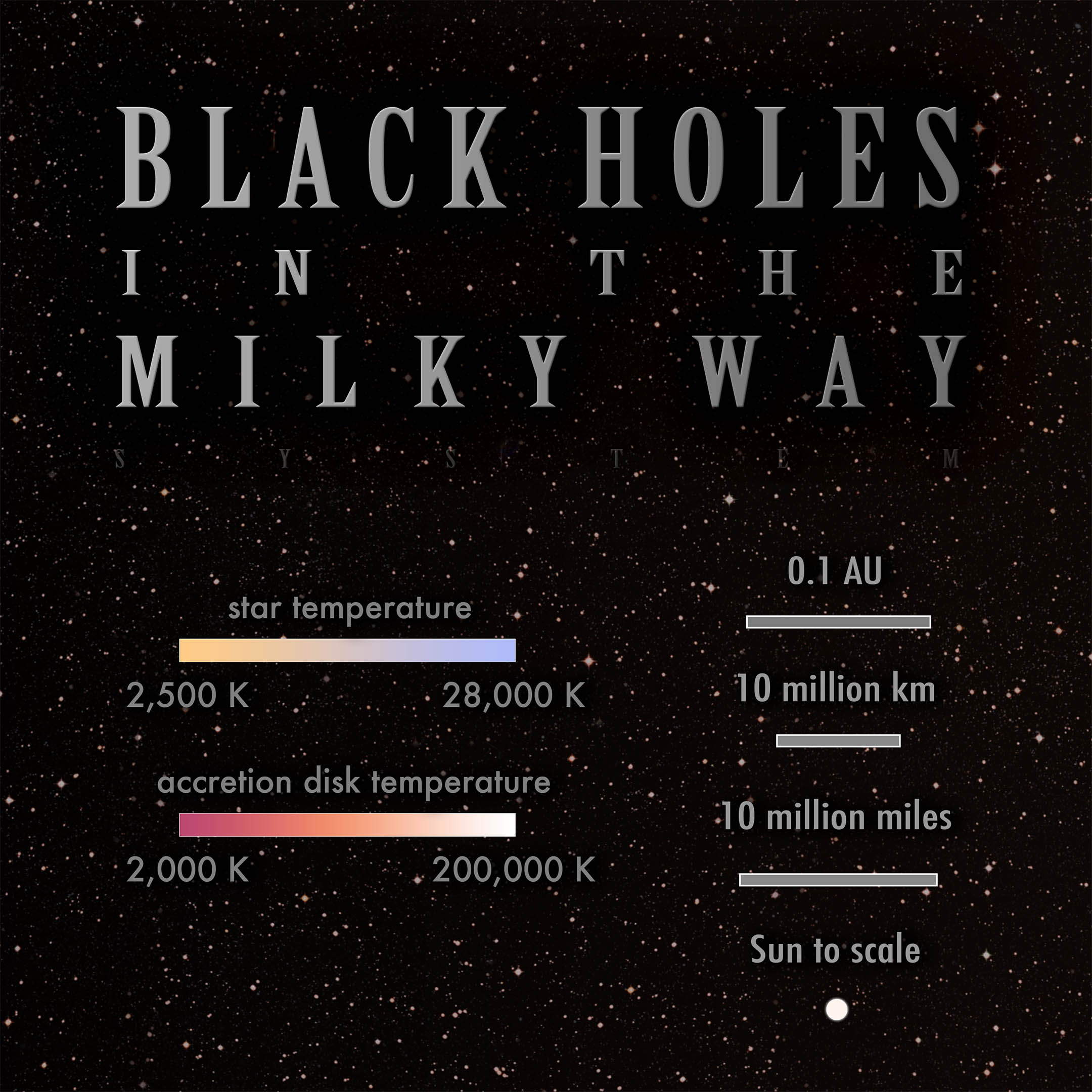
Cygnus X–1
First confirmed black hole
Distance: 7,200 ly
Constellation: Cygnus
Orbital period: 5.6 days
BH mass: 21 suns
Companion mass: 40 suns
V404 Cygni
A variable star, a nova, and a soft X-ray transient in 1956, 1989, and 2015
Distance: 8,200 ly
Constellation: Cygnus
Orbital period: 6.5 days
BH mass: 12 suns
Companion mass: 1.9 suns
LMC X–1
The most intense source of X-rays detected in the Large Magellanic Cloud
Distance: 165,000 ly
Orbital period: 3.9 days
BH mass: 10.9 suns
Companion mass: 32 suns
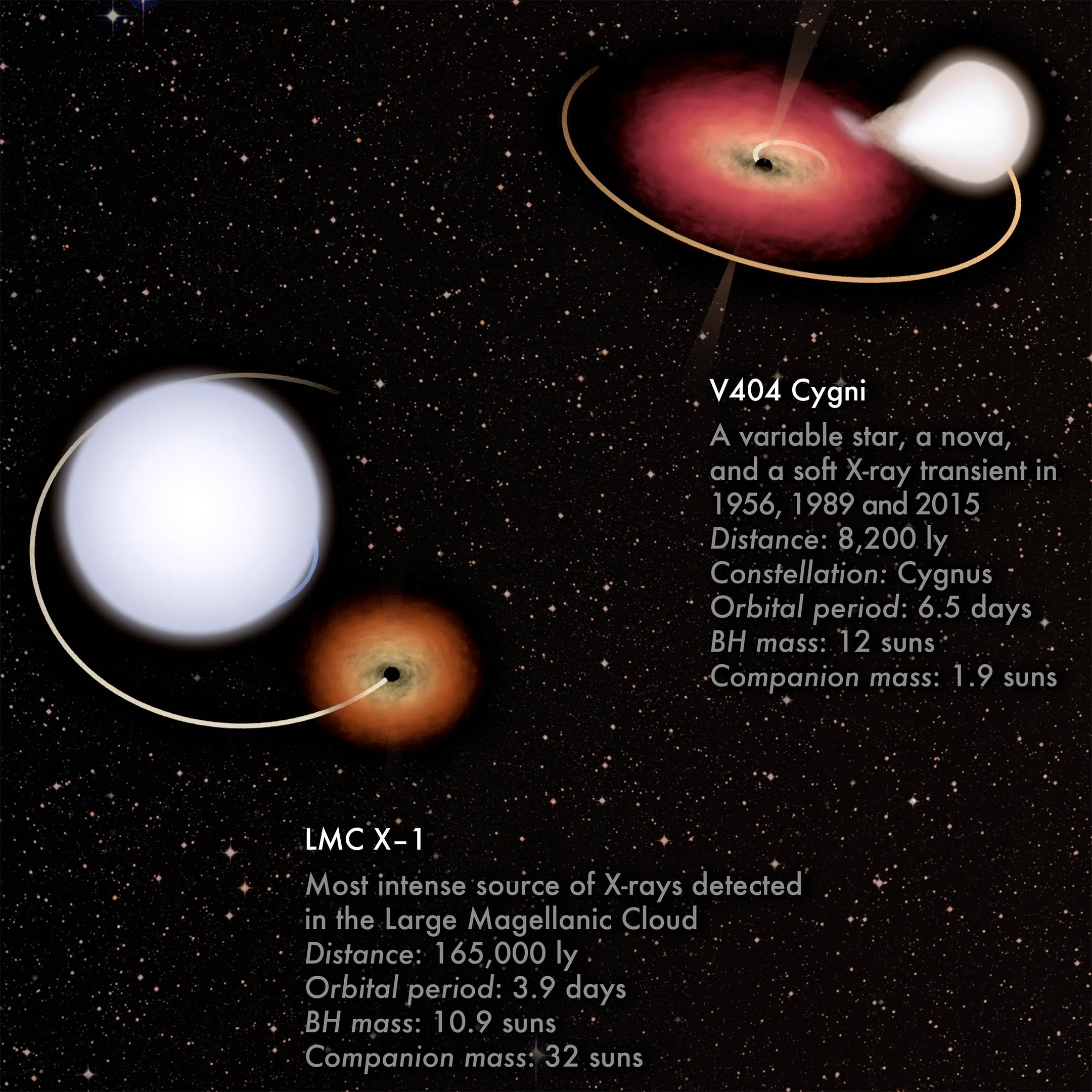

GX 399–4: One of the most active X-ray binaries yet discovered flaring from time to time
Distance: 27,000 ly
Orbital period: 1.7 days
BH mass: 5.8-10 suns
Companion mass: 0.8 suns
GRS 1124–683: Erupted in 1991
Type: X-ray Nova
Distance: 16,000 ly
Constellation: Musca
Orbital period: 10.4 hours
BH mass: 7 suns
Companion mass: 0.7 suns
XTE J1550–564: A microquasar, it fires out jets of matter arising from an accretion disk
Distance: 17,000 ly
Constellation: Norma
Orbital period: 1.5 days
BH mass: 11 suns
GRS 1009–45: Erupted in 1993 in gamma rays and in X-rays
Distance: 13,000 ly
Constellation: Vela
Orbital period: 4.8 hours
BH mass: 8-9 suns
Companion Mass: 0.4 suns
4U 1543–475: A recurrent X-ray Transient which erupted in 1971, 1983, 1992, and 2002
Distance: 18,000 ly
Constellation: Lupus
Orb. period: 1.1 days
BH mass: 2.5 suns
A0620–00: Closest-known accreting black hole system
Distance: 3,300 ly
Constellation: Monoceros
Orbital period: 7.8 hours
BH mass: 6.6 suns
Companion mass: 0.5 suns

V4641 Sagittarii: Erupted in 1999, source of one of the fastest superluminal jets in the Milky Way
Distance: 20,200 ly
Orbital period: 2.8 days
BH mass: 6 suns
Companion mass: 3 suns
LMC X–3: X-ray Transient source that is almost always “on”
Distance: 165,000 ly
Constellation: Dorado (LMC)
Orbital period: 1.7 days
BH mass: 5-13 suns
Companion mass: 8 suns
GRO J1655–40: Moving through the Milky Way at around 112 km/s
Distance: 5,500–11,000 ly
Constellation: Scorpius
Orbital period: 2.6 days
BH mass: 5 suns
Companion mass: 2 suns
MAXI J1820+070: Only known black hole with a 40-degree tilted axis
Distance: 10,000 ly
Constellation: Ophiuchus
Orbital period: 16.3 hours
BH mass: 8 suns
Companion mass: 0.5 suns
GS 1354–64: Farthest black hole yet discovered in the Milky Way
Distance: 85,000 ly
Constellation: Circinus
Orbital period: 2.6 days
BH mass: 9 suns
Companion mass: 1-2 suns
H1705–25: Erupted in 1977
Type: X-ray Transient
Distance: 27,000 ly
Constellation: Ophiuchus
Orbital period: 12.5 hours
BH mass: 7 suns
Companion mass: 0.3 suns

GRS 1915+105
The widest-known accreting black hole system
Distance: 28,000 ly
Constellation: Aquila
Orbital Period: 33.5 days
BH mass: 11-15 suns
Companion mass: 1.2 suns
Accretion disk diameter: 80 million km
Sagittarius A*
Supermassive black hole at the center of the Milky Way
Distance: 26,700 ly
BH mass: 4,000,000 suns
Event horizon diameter: 12 million km
Emission ring diameter: 63 million km

GRO J0422+32: Possibly the smallest black hole yet discovered, a 1992 X-ray nova
Distance: 7,800 ly
Constellation: Perseus
Orbital period: 5.1 hours
BH mass: 3.6-5 suns
Companion mass: 0.4 suns
XTE J1118+480:One of the few known examples of a “black hole kick” from a supernova
Distance: 6,000 ly
Orbital period: 12 hours
BH mass: 7.2 suns
Companion mass: 0.2 suns
MAXI J1659-152: Fastest rotating known black hole/star system
Distance: 29,000 ly
Orbital period: 2.4 hours
BH mass: 4 suns
Companion mass: 0.2 suns
Companion speed: 2M km/h
XTE J1859–226: Erupted in 1999 with subsequent smaller outbursts
Type: X-ray Transient
Distance: 13,700 ly
Constellation: Vulpecula
Orbital period: 6.6 hours
BH mass: 5.4 suns
GS 2000+25: A low-mass X-ray binary and also an X-ray nova
Distance: 8,800 ly
Constellation: Vulpecula
Orbital period: 8.26 hours
BH mass: 7.5 suns
Companion mass: 0.5 suns
XTE J1650–500: 2001 X-ray transient was once considered the smallest known black hole
Distance: 10,700 ly
Constellation: Ara
Orbital period: 7.7 hours
BH mass: 9.7 suns



